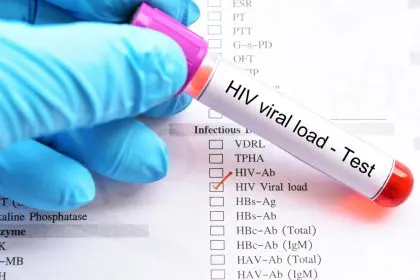If your pre-period days feel more like a bout with the flu than typical menstrual discomfort, you’re not alone. This collection of flu-like symptoms—from body aches to headaches and extreme fatigue—affects countless women yet remains largely underdiscussed in mainstream health conversations.
What exactly is ‘period flu’?
While not an official medical diagnosis, ‘period flu’ describes the constellation of flu-like symptoms many women experience in the days leading up to their menstrual cycle. These symptoms typically begin after ovulation and may continue until menstruation starts.
Unlike a genuine case of influenza, period flu doesn’t involve respiratory symptoms like coughing, sneezing, or fever. Instead, it manifests as physical discomfort that can significantly impact daily functioning for many women.
Research indicates that over 90% of women experience some form of premenstrual syndrome (PMS), but period flu represents a more intense version of these symptoms, sometimes making regular activities challenging or impossible.
The 9 telltale symptoms of period flu
- Overwhelming fatigue: Many women report exhaustion that feels disproportionate to their activity level or sleep patterns
- Gastrointestinal distress: Nausea and diarrhea can mirror stomach flu symptoms, further complicating everyday activities
- Persistent headaches: From dull, constant pressure to more intense pain that affects concentration and focus
- Joint and muscle pain: Generalized aching throughout the body, similar to what’s experienced during actual influenza
- Lower back discomfort: Pain that ranges from mild to severe, often radiating to the lower abdomen and pelvic region
- Intense abdominal cramping: Cramps that may feel more severe than typical menstrual pain, sometimes beginning days before bleeding starts
- Noticeable bloating: Fluid retention that may cause clothing to fit differently and create physical discomfort
- Breast tenderness: Sensitivity that makes even light pressure uncomfortable or painful
- Mood changes: Emotional symptoms including irritability, anxiety, or low mood that accompany the physical discomfort
It’s important to note that symptoms like elevated temperature, sore throat, congestion, or coughing are not associated with period flu and likely indicate an actual illness requiring different treatment.
The hormonal cascade behind the symptoms
The primary driver behind period flu symptoms is the dramatic fluctuation of hormones during your menstrual cycle. During the luteal phase (after ovulation), your body experiences significant drops in estrogen and progesterone levels.
This hormonal rollercoaster affects neurotransmitters in your brain, particularly serotonin—the chemical messenger that helps regulate mood, sleep, and pain perception. When serotonin levels decrease, you may experience more intense physical discomfort and emotional symptoms.
Another key factor is the increased production of prostaglandins, hormone-like substances that trigger uterine contractions. Higher prostaglandin levels not only intensify cramping but can also contribute to gastrointestinal symptoms like diarrhea and nausea, as these compounds affect smooth muscle throughout the body, including the digestive tract.
Your immune system may also play a role in period flu symptoms. Research suggests that inflammation increases during certain phases of the menstrual cycle, potentially contributing to the flu-like feelings of muscle aches and fatigue.
How debilitating can period flu become?
The severity of period flu varies widely among women. While some experience mild discomfort that they can manage with simple remedies, others face symptoms so debilitating they must adjust their schedules or take time off work.
Studies indicate approximately 5% of women with PMS experience symptoms severe enough to significantly disrupt their daily functioning. For these women, period flu isn’t just an inconvenience—it’s a monthly challenge that affects their quality of life, work performance, and social activities.
Unfortunately, many women find their symptoms dismissed or minimized by healthcare providers, leading to delayed treatment or inadequate symptom management. This dismissal reflects broader issues in women’s health care, where menstrual symptoms are often normalized despite their impact.
7 effective strategies to relieve period flu symptoms
- Optimize your nutrition: Focus on anti-inflammatory foods during the weeks before your period. Include fatty fish rich in omega-3s, colorful fruits and vegetables, whole grains, and foods high in calcium and magnesium. Reducing processed foods, alcohol, caffeine, and salt can help minimize bloating and inflammation.
- Explore hormonal birth control options: Hormonal contraceptives can help stabilize the fluctuations that trigger period flu symptoms. Various forms including pills, patches, rings, or hormonal IUDs might provide relief by regulating your cycle and reducing the severity of hormonal drops. Discuss with your healthcare provider which option might work best for your specific symptoms and medical history.
- Prioritize hydration: Proper fluid intake becomes especially important if you experience diarrhea or other fluid-depleting symptoms. Beyond plain water, consider electrolyte-balanced drinks, herbal teas like ginger or peppermint, and broths to replace lost minerals. Monitor your urine color—pale yellow indicates proper hydration.
- Incorporate strategic exercise: Physical activity stimulates endorphin release, your body’s natural pain relievers. Even light movement like walking, swimming, or gentle yoga can reduce cramping and boost mood. During your most symptomatic days, listen to your body and adjust intensity accordingly rather than abandoning activity altogether.
- Use targeted anti-inflammatory medications: Over-the-counter NSAIDs (non-steroidal anti-inflammatory drugs) like ibuprofen or naproxen sodium can effectively reduce prostaglandin production, addressing multiple symptoms simultaneously. For maximum effectiveness, start taking these medications at the earliest sign of symptoms rather than waiting until discomfort becomes severe.
- Create a rest strategy: Fatigue often ranks among the most disruptive period flu symptoms. Prioritize sleep by establishing a consistent bedtime routine, minimizing screen time before bed, and potentially adjusting your schedule to accommodate extra rest during your most symptomatic days.
- Apply strategic heat therapy: Using heating pads, warm baths, or heat wraps can relax tense muscles and increase blood flow to areas experiencing pain. Portable heat patches offer discreet relief during work or school hours when other options aren’t practical.
When to seek professional medical advice
While self-care strategies help many women manage period flu symptoms, certain situations warrant medical attention:
Symptoms that consistently interfere with your ability to function in daily life Pain that doesn’t respond to over-the-counter medications Symptoms that have worsened significantly over time New or unusual symptoms that haven’t occurred in previous cycles Extremely heavy bleeding accompanied by severe pain Symptoms that last well beyond the typical timeframe
Before your appointment, track your symptoms using a period-tracking app or journal to provide your healthcare provider with specific information about your experience. Note symptom intensity, duration, and any patterns you observe in relation to your cycle.
The importance of validating women’s experiences
Period flu, while not an official diagnosis, represents a real and challenging experience for many women. The collection of symptoms can significantly impact quality of life and deserves proper acknowledgment and treatment.
Women often internalize the message that menstrual discomfort is simply something to endure rather than address. This normalization of pain and discomfort contributes to delayed diagnosis of conditions like endometriosis, which takes an average of 7-10 years to diagnose after symptom onset.
Understanding period flu as a legitimate physical experience rather than an exaggeration or weakness represents an important step toward better menstrual health care. By recognizing these symptoms as real and seeking appropriate treatment, women can improve their monthly experiences and overall wellbeing.
While period flu may never completely disappear for those susceptible to it, implementing targeted strategies can significantly reduce its impact. Through a combination of lifestyle adjustments, appropriate medications, and professional guidance when needed, most women can find effective ways to manage their symptoms and maintain their quality of life throughout their entire menstrual cycle.














